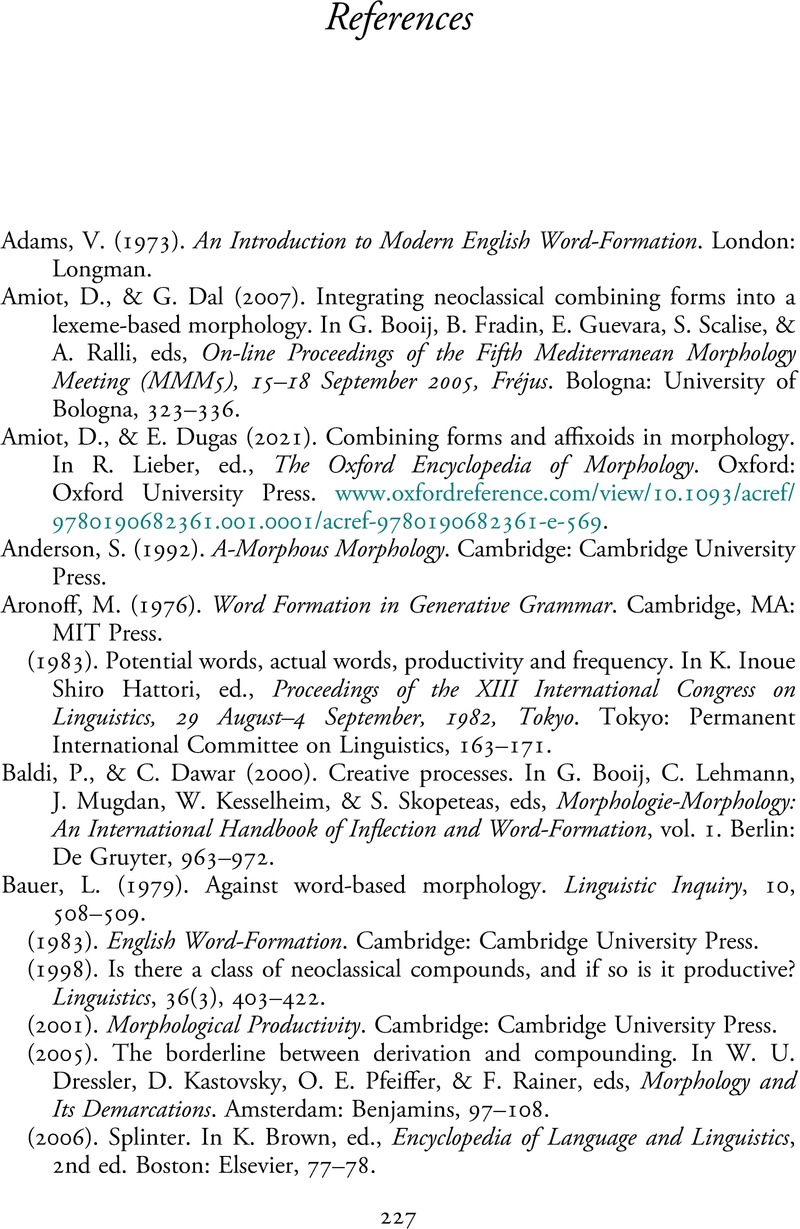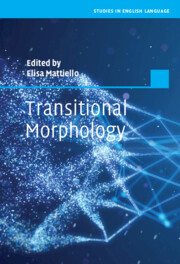Book contents
- Transitional Morphology
- Studies in English Language
- Transitional Morphology
- Copyright page
- Contents
- Figures
- Tables
- Preface
- Acknowledgements
- Abbreviations
- Chapter 1 Introduction
- Chapter 2 Background of Combining Forms
- Chapter 3 Dataset and Methodology
- Chapter 4 Neoclassical Combining Forms
- Chapter 5 Abbreviated Combining Forms
- Chapter 6 Secreted Combining Forms
- Chapter 7 Splinters or Combining Forms ‘in the Making’
- Chapter 8 Conclusions
- Appendix List of Combining Forms
- References
- Index
- References
References
Published online by Cambridge University Press: 13 December 2022
- Transitional Morphology
- Studies in English Language
- Transitional Morphology
- Copyright page
- Contents
- Figures
- Tables
- Preface
- Acknowledgements
- Abbreviations
- Chapter 1 Introduction
- Chapter 2 Background of Combining Forms
- Chapter 3 Dataset and Methodology
- Chapter 4 Neoclassical Combining Forms
- Chapter 5 Abbreviated Combining Forms
- Chapter 6 Secreted Combining Forms
- Chapter 7 Splinters or Combining Forms ‘in the Making’
- Chapter 8 Conclusions
- Appendix List of Combining Forms
- References
- Index
- References
Summary

- Type
- Chapter
- Information
- Transitional MorphologyCombining Forms in Modern English, pp. 227 - 235Publisher: Cambridge University PressPrint publication year: 2022



